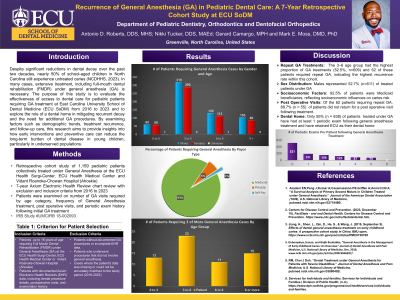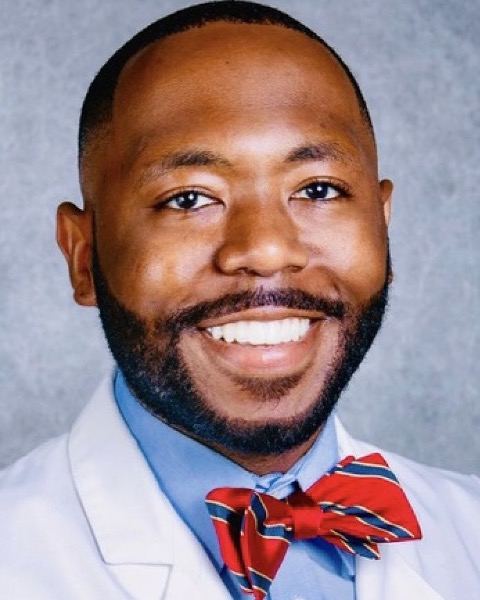Other
Pediatric Dental Anesthesia Recurrence: A 7-Year Retrospective Analysis
406 - Recurrence of General Anesthesia (GA) in Pediatric Dental Care: A 7-Year Retrospective Cohort Study at ECU SoDM


Antonio D. Roberts, DDS, MHS
PGY-2
ECU School of Dental Medicine
ECU School of Dental Medicine
Greenville, North Carolina, United States- NT
Nikki Tucker, DDS, MAEd
ECU
Greenville, North Carolina, United States - RB
Randall N. Ball, DDS, MS
Clinical Associate Professor
ECU School of Dental Medicine
Greenville, North Carolina, United States
Presenting Author(s)
Research Mentor(s)
Program Director(s)
A retrospective cohort study was conducted to investigate the outcomes of pediatric patients treated with general anesthesia (GA) within the East Carolina University Pediatric Dental Residency Program from Fall 2016 to Fall 2023. The aim of the study was to assess demographic trends, treatment recurrence, and follow-up care for children requiring GA in a pediatric dental setting. A retrospective analysis of patient records was conducted using the Axium electronic health record system to evaluate the establishment of a dental home, post-GA follow-up, and the need for repeat GA procedures.
A total of 1,159 pediatric patients were treated under GA during the study period. Of these, 62 patients required repeat GA treatment, with 23 in the 3–6-year age group, suggesting a higher recurrence rate in this cohort. Patients were stratified into four age groups: 0–3, 3–6, 6–9, and 9+. The 3–6 age group accounted for the highest proportion of GA treatments ( n=609). Males represented (n=611) of treated patients, and 92.5% were Medicaid beneficiaries, reflecting the socioeconomic factors influencing access to care.
These findings highlight that children aged 3–6 years are particularly at risk for requiring repeat GA procedures, underscoring the need for early and comprehensive dental interventions in this age group. The study suggests that clinicians should be particularly vigilant in managing treatment and follow-up care for younger pediatric patients, especially those from lower-income backgrounds. Future research could explore strategies for reducing the need for repeat GA procedures and enhancing early dental care in vulnerable populations.
Identify Supporting Agency and Grant Number: N/A

.jpg)